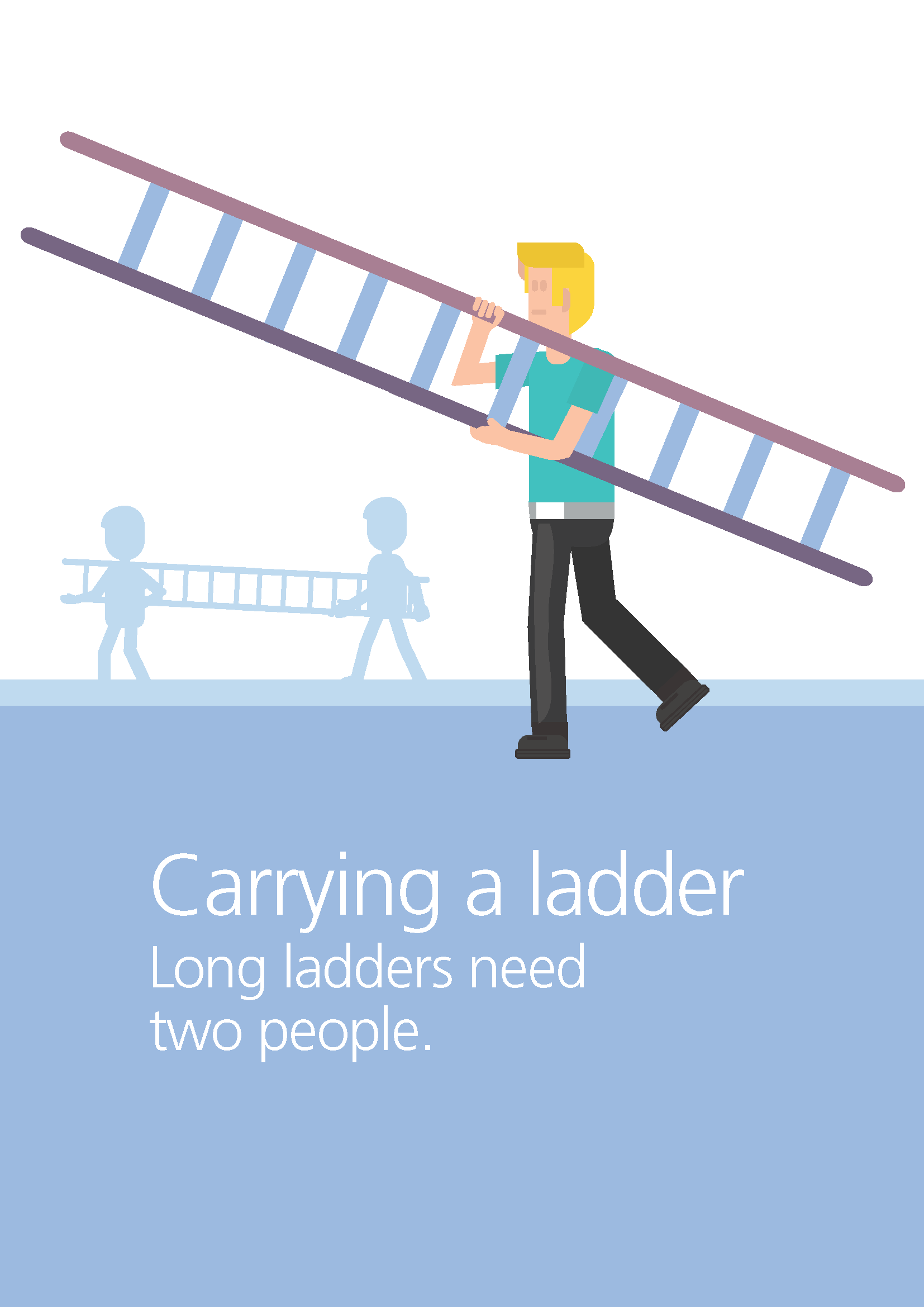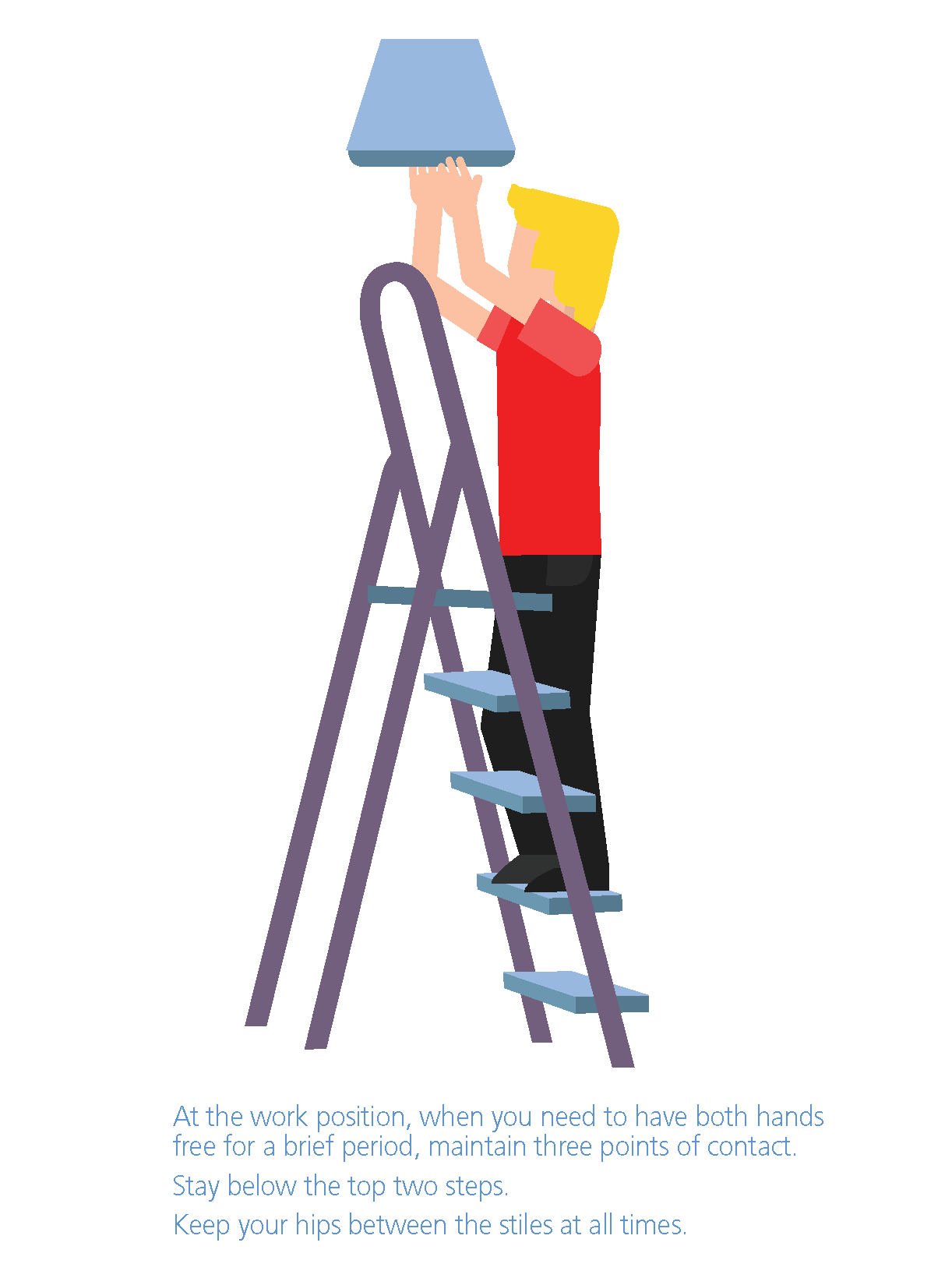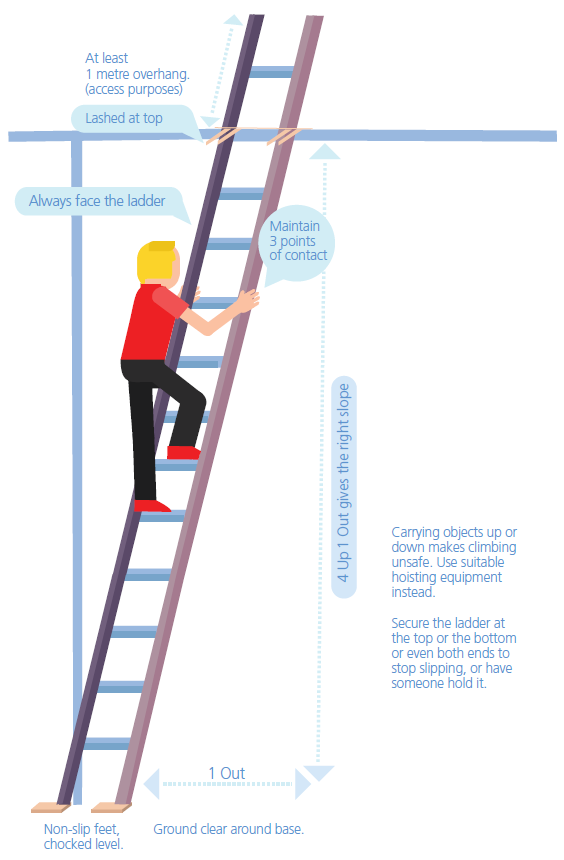Falls from ladders can have devastating consequences.
There are many different types of ladders and it is important that consideration is given to which ladder is the most suitable for the job.
When working at height, ladders should only be used if there is no other reasonably practicable alternative, such as scaffolding or an elevating work platform.
Positioning
If you must use a ladder, before you start work:
- conduct a hazard identification and risk assessment
- ensure that the ladder has an angle or pitch of about 1:4 (one out and four up)
- ensure that the ladder extends at least one metre above the landing
- ensure that the ladder is installed on a stable surface
- secure the top and bottom of the ladder so it cannot shift position
- install a barricade or warning signs if there is a potential hazard to people near the work area
- only position or use the ladder in a manner that does not endanger others
- use warning signs or have a person guard at the foot of the ladder if needed
- if the ladder is placed near a doorway, the door should be locked open or closed.

Safe use
When using a ladder:
- only one person should be on a ladder at any given time
- maintain three points of contact (e.g. two feet and one hand, or two hands and one foot) with the ladder at all times
- always climb and descend facing the ladder
- do not carry anything when climbing or descending
- keep your body centred between the sides of the ladder
- do not lean sideways or over-reach
- do not stand above the tread or rung on the ladder indicated as the maximum safe working height
- only conduct light work from a ladder
- use a non-conductive, insulated ladder for electrical work or near electrical hazards
- check any older steel-tubing ladders for suitability to the task.
Portable ladders
Practical tips on how to use portable ladders correctly.
Step or trestle ladders
When using step or trestle ladders:
- only use them in the fully open position
- use a rigid metal spreader or locking device
- ensure the load is carried by the front stiles.

Training and supervision
The importance of training and supervision to ensure safe work practises are being followed.
Inspections and maintenance
Ladders should be checked frequently and periodically serviced by a competent person (someone who is qualified either through experience and/or training).
Consideration should be given to the type of environment in which the ladder has been used. For example, aluminium ladders can easily become damaged if exposed to acids.
Load rating
Ensure compliance with the manufacturer's load rating for the ladder.
Further information
Managing the risk of falls in the workplace - Code of Practice



